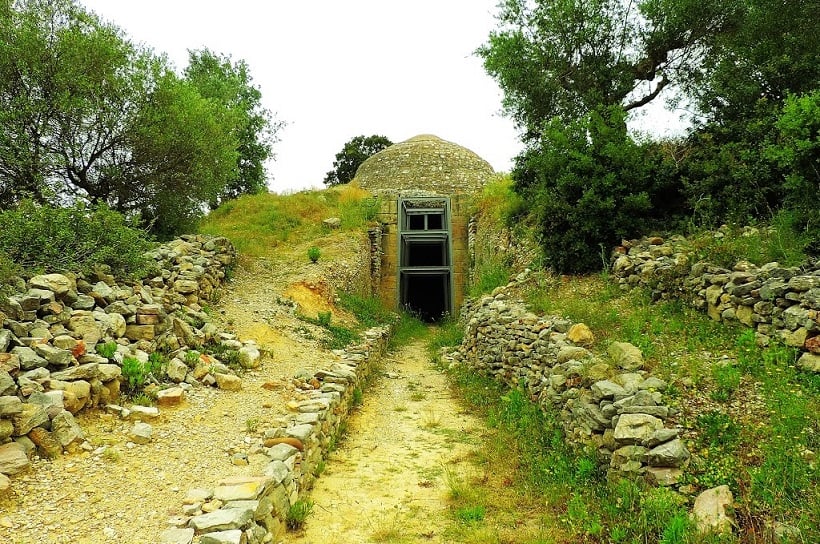

Less famous than the Acropolis of Mycenae or the Palace of Nestor, the archaeological site of Peristeria with its perfectly preserved vaulted tombs and precious gold findings, bears witness to life during the early Mycenaean Era in Greece.
Located near Myro village, 8 kilometers to the northeast of Kyparissia, in the region of Messenia, Peloponnese, southern Greece, the ancient city at Peristeria became an important centre of the Mycenaean world between 1500-1400 B.C., before the neighboring Pylos and Mycenae rose to glory.
Peristeria is most famous for its tholos tombs, the monumental circular burial structures characteristic of Mycenaean architecture. These tombs suggest the presence of an elite ruling class and reflect the region’s wealth and cultural connections with other Mycenaean centers.
Excavations have uncovered a variety of artifacts, including gold jewelry, pottery, seal stones, and tools, which highlight the sophistication of Mycenaean craftsmanship. Some of these artifacts indicate trade links with other regions, including Crete, the Cyclades, and possibly even Egypt and the Near East.
The largest of the vaulted tombs is preserved in excellent condition.
The site was first excavated in 1960 by Spyros Marinatos and later by Georgios Korres, who brought back to the light four vaulted tombs, remains of a palace, and residences, dating back to the 2nd millennium b.C..
Archaeologists dubbed the archaeological site of Peristeria the “Mycenae of the Western Peloponnese”.
The Ephorate of Antiquities of Messenia describes the ancient city at Peristeria as “crowded and extensive,” since it had been continuously inhabited from the Middle Helladic period (2050-1680 b.C.) until the end of the Mycenaean Era (1680-1180 b.C.)
Rich grave gifts uncovered beneath the floor of one of the tombs, military equipment, golden vessels and jewelry from the site are exhibited at the Archaeological Museum of Chora, in nearby Filiatra.
“Although the vaulted tombs had already been looted since antiquity, the rescued valuable objects testify to the inhabitants’ wealth and the contacts with Minoan Crete. In addition, they provide information on the practice of domestic worship and the social structure of the Mycenaeans,” the Ephorate explains on its website.
The Greek Ministry of Culture and Sports has recently allocated one million euros for the restoration of the archaeological site of Peristeria. Half of the funding, sourced from the European Recovery Fund, will be used towards the restoration of the vaulted tombs.

The project will include investigation, maintenance and protection works, as well as interventions to upgrade the access to and around the archaeological site, to create information and service infrastructure. There is also provision for promotional activities.
“The Ministry of Culture and Sports wishes to highlight and make these early, and largely unknown, Mycenaean monuments a destination”, Minister Lina Mendoni said during her visit to ancient Peristeria in July.
